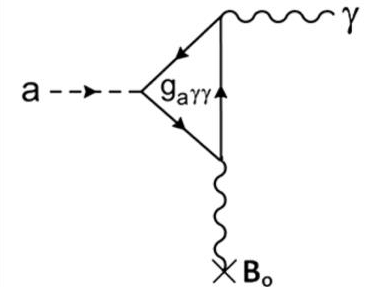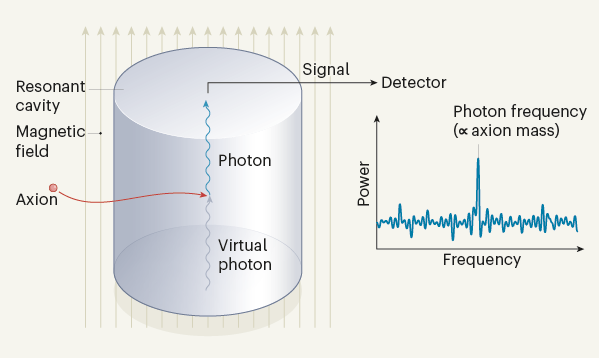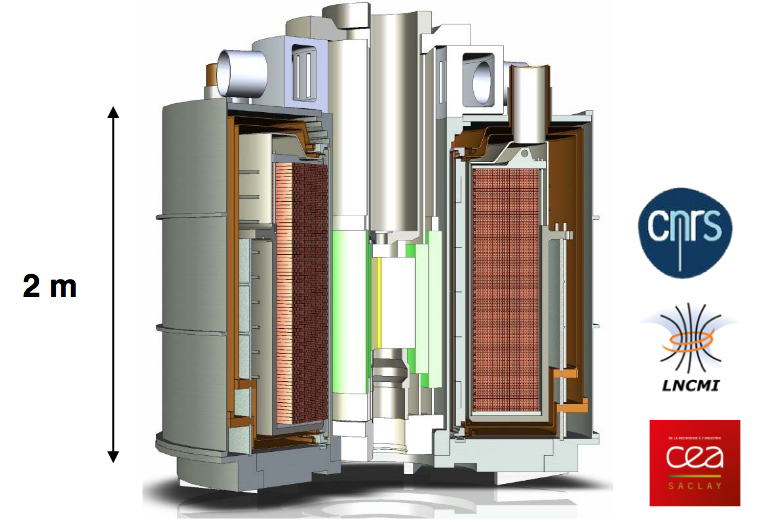Axions are expected to interact very weakly with the standard model particles. Hence they were first thought to remain « invisible », until P. Sikivie showed how one may actually detect them.
Indeed, although they carry no net electrical charge, axions can interact with pairs of photons via a process called the Primakoff effect.
Its probability of occurence is very low, but it may be enhanced by providing a high static magnetic field, and the generated electromagnetic power can be collected by a high quality factor resonant cavity.

Such a detector is called a cavity haloscope (other types of detectors are possible, which we do not describe here). In practice one needs to produce the largest static magnetic field in the largest volume, maintain the cavity at the lowest temperature to reduce the thermal electromagnetic noise, and use ultra-low noise cryogenic amplifiers.

One major difficulty is that the axion mass is not determined by the theory. However cosmological and astrophysical observations constrain the possible mass range, which extends typically from 1 micro-eV to 1 milli-eV, i.e. it covers the micro-wave frequency range. Since the useful mode of a cavity is excited only if the axion mass corresponds to its frequency, many tunable cavities will be needed to scan the interesting mass range.
The second difficulty is that the expected microwave power is very small. According to benchmark theoretical models, and assuming that most of our galaxy’s dark matter is made of axions, typical orders of magnitude are 10-24-10-22 Watt depending on the detector characteristics and axion mass aimed at. This is much smaller that the thermal power, hence one has to integrate measurements over long times in order to average out the thermal power fluctuations and allow the axion peak to emerge.
Exploring the whole mass range with the sufficient sensitivity is a formidable task, which will necessitate the multiplication of dedicated detectors and significant progress in the signal detection techniques.
The GrAHal project aims to develop a platform involving several haloscopes running in parallel at the highest sensitivity, and to propose and test new detection schemes. It relies on the outstanding expertises and infrastructures present in Grenoble.
Néel Institute has a highly recognised expertise in cryogenics, ranging from fundamental physics at ultra-low temperatures to the developement of state of the art instruments for astronomy and astrophysics.
Another key activity concerns quantum measurement techniques at microwave frequencies and the developement of large band quantum limited amplifiers of prime interest for haloscopes.
As for the production of high magnetic fields, one of the key sources will be the new hybrid magnet due to start in 2022 in LNCMI. Its different volume/magnetic field configurations will offer a unique environnement for the operation of various types of haloscopes.

